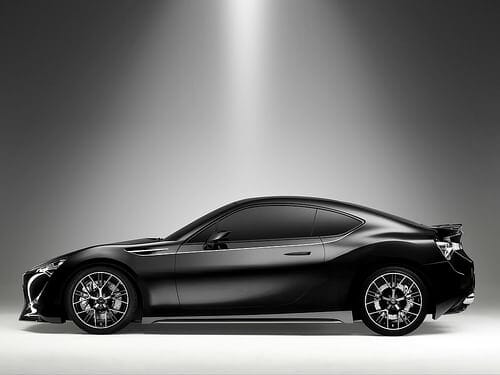Editorial Note: We earn a commission from partner links on Doughroller. Commissions do not affect our authors’ or editors’ opinions or evaluations. Learn more here.
Have you ever tallied up what it costs to own a car? I don’t mean on a year-to-year basis, but the total cost of owning a car over a lifetime? According to the American Automobile Association (AAA) it costs $8,876 per year to own and operate an average car. Now if you add that up over 50 years, it comes to $443,800, based on current dollars.
But I don’t think that tells the whole story. In fact, we can understand just about everything related to money by examining the financial ramifications of owning a car.
So let’s look at the cost of owning a car from a different angle:
The Opportunity Cost of Owing a Car
For this exercise, were going to look at a single aspect of owning a car: the cost of investing money in the purchase of a series of cars over a lifetime, versus investing an equivalent amount in a diversified investment portfolio comprised primarily of stocks.
Let’s begin by establishing a baseline. Well, assume that an individual pays $20,000 for a car at age 25. She pays cash. Five years later she sells the car for 50% of what she paid and buys another $20,000 car. She repeats this process until she buys her 10th car at age 70. We’ll assume she sells her last car for $10,000 at age 75 and her children drive her where she needs to go thereafter. (At least I hope my kids start driving me around if I make it to 75!)
To keep it simple, we’re going to ignore inflation entirely – we’ll assume that the purchase price of a car will remain at $20,000 for the next 50 years. Well also ignore operating costs, the kind that AAA focuses on in their calculation – insurance, maintenance, repairs, fuel, interest on a car loan, and Christmas tree air fresheners to hang from the rearview mirror.
How much do these cars cost our financial freedom fighter? At one level the math is easy. The first car costs $20,000. Each car thereafter costs $10,000 ($20,000 less the proceeds from selling the previous car for $10,000). Add up the 10 purchases, and we arrive at $110,000 (that’s $20,000 for the first car, plus 9 cars thereafter at $10,000 each).
Spending $110,000 over a lifetime to keep yourself in a late model car seems like a reasonable trade-off – until you consider the alternative. That’s where the opportunity cost of investing in cars gets more than a bit frightening.
The Cost of Owning a Car When Measured By Lost Investment Income
What if, instead of buying cars, she invested the money. How much would she have by the time she reached 75 assuming she invested the same money at an 8% average annual investment return?
Here’s a breakdown of the results:
Car #1: $20,000 invested for 50 years (age 25 to 75): $938,032.25 (Thats one expensive car!)
Car #2: $10,000 invested for 45 years (age 30 to 75): $319,204.49 (Amazing how just 5 years and $10,000 can change the result)
Car #3: $10,000 invested for 40 years (age 35 to 75): $217,245.21
Car #4: $10,000 invested for 35 years (age 40 to 75): $147,853.44
Car #5: $10,000 invested for 30 years (age 45 to 75): $100,626.57
Car #6: $10,000 invested for 25 years (age 50 to 75): $68,484.75
Car #7: $10,000 invested for 20 years (age 55 to 75): $46,609.57
Car #8: $10,000 invested for 15 years (age 60 to 75): $31,721.69
Car #9: $10,000 invested for 10 years (age 65 to 75): $21,589.25
Car #10: $10,000 invested for 5 years (age 70 to 75): $14,693.28
Total Opportunity Cost Over a Lifetime of Car Purchases: $1,906,060.52
I triple-checked the math. Trust me, its correct. Buying a car every five years under the assumptions outlined above will cost over $1.9 million in missed opportunities to build wealth over a lifetime.
Now, imagine a couple buying two cars every five years! I said this would be frightening.
It’s Ugly Even When You Use More Conservative Assumptions
The opportunity cost is still impressive, even if you make the assumptions more moderate. Let’s look at some alternative scenarios.
Alternative Scenario #1 – Keep each car for 10 years
Rather than assuming that you will buy a new car every five years, let’s crunch the numbers under the assumption that you will do so only every 10 years. We’ll assume that at the end of each decade the car is worth just $5,000. How do the numbers stack up?
Car #1: $20,000 invested for 50 years (age 25 to 75): $938,032.25 (Thats still one expensive car!)
Car #2: $15,000 invested for 40 years (age 35 to 75): $325,867.82
Car #3: $15,000 invested for 30 years (age 45 to 75): $150,939.85
Car #4: $15,000 invested for 20 years (age 55 to 75): $69,914.36
Car #5: $15,000 invested for 10 years (age 65 to 75): $32,383.87
Total Opportunity Cost Over a Lifetime of Car Purchases: 1,517,138.16
You will save nearly $400,000 if you can get 10 years out of each car rather than five, but youre still looking at an opportunity cost of over $1.5 million.
Let’s keep going.
Alternative Scenario #2 – Keep each car for 15 years
Let’s take it one step further. Let’s assume our fearless freedom fighter drives each car 15 years, after which it has no resale value:
Car #1: $20,000 invested for 50 years (age 25 to 75): $938,032.25 (That’s still one expensive car!)
Car #2: $20,000 invested for 35 years (age 40 to 75): $295,706.89
Car #3: $20,000 invested for 20 years (age 55 to 75): $93,219.14
Car #4: $20,000 invested for 5 years (age 70 to 75): $29,386.56
Total Opportunity Cost Over a Lifetime of Car Purchases: $1,356,344.84
Now we’ve saved more than $500,000. If you think driving the same car for 15 years is crazy, my wife’s car is 13 years old and our minivan is 10 years old. We have no plans to sell either.
One final set of numbers.
Alternative Scenario #3 – Each car costs $15,000 and she keeps it for 15 years
So far we’ve assumed the purchase of a $20,000 new car. Let’s instead assume she buys a $15,000 car and drives it for 15 years before buying a new one.
Car #1: $15,000 invested for 50 years (age 25 to 75): $703,524.19
Car #2: $15,000 invested for 35 years (age 40 to 75): $221,780.16
Car #3: $15,000 invested for 20 years (age 55 to 75): $69,914.36
Car #4: $15,000 invested for 5 years (age 70 to 75): $22,039.92
Total Opportunity Cost Over a Lifetime of Car Purchases: $1,017,258.63
That cuts the opportunity cost by almost half from our first scenario, but she’s still looking at an opportunity cost that’s well above $1 million.
At this point, you may have some objections with my assumptions. First and foremost, you may be thinking it’s unrealistic to go without a car. Maybe it is, maybe it’s not. I’ll leave that to you. Remember, I’m just here to show you the numbers. If you think it’s not possible, however, listen to the podcast below. I interview Alan Steinborn from RealMoneyLife.com. With the exception of a three-year period, he hasn’t owned a car since President Clinton was in office.
No matter how you crunch the numbers, if you can find a way to eliminate owning a car, own fewer cars, or even drive them longer, there’s a big pot of gold waiting at the end of this rainbow.


